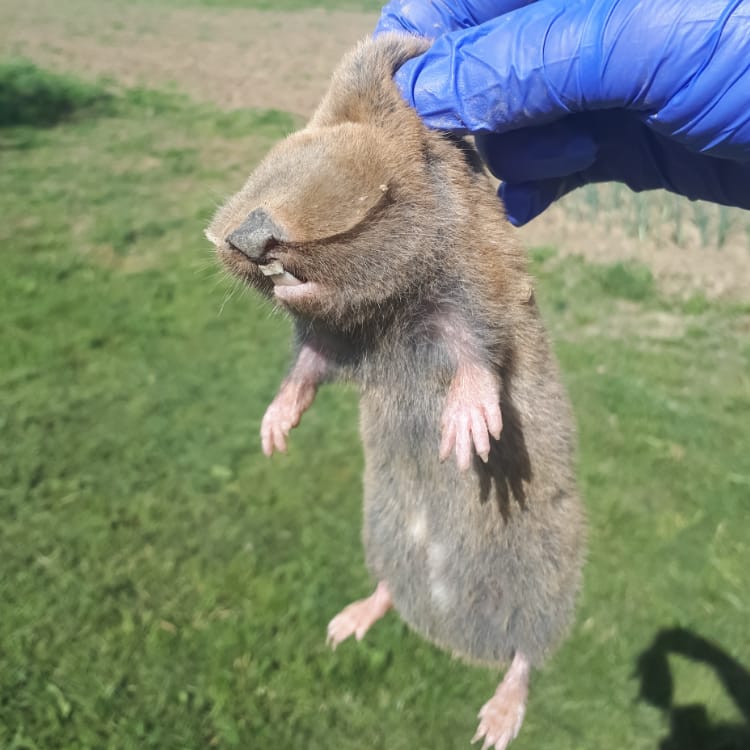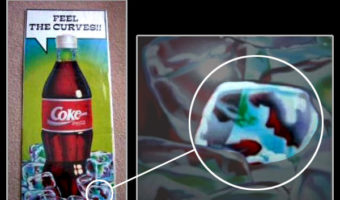Are Lesser Blind Mole-Rats the Strangest Creatures on Earth?

Our world is swarming with millions of odd and interesting creatures. Once in a while, you may come across or read about one which you cannot decide between being cute, adorable, or downright scary! A lesser blind mole-rat, a funny-looking rodent of the subterranean world, can put you in such a dilemma.
Blind mole-rats of the family  Spalacidae are mainly of two different kinds: the lesser blind mole-rats, or the Spalax leucodon, and the greater blind mole-rats. They are mainly found around the eastern portion of the Mediterranean and the Black Sea, from the Balkans through Ukraine, Asia Minor, Syria, Palestine, and into Egypt and Libya. They are underground rodents covered in dense fur, and appear earless and eyeless, with large, chiseled teeth protruding outside of their mouths.
Now you decide whether these fuzzy creatures are the most adorable rodents in the universe, or a little creepy to look at.
Table of Contents
Where are the eyes? Do the lesser blind mole-rat really have no eyes?
All blind mole-rats, as their names suggest, are blind. But that doesn’t mean they do not have eyes. In fact, one can also say that they are not completely blind as they do have rudimentary eyes, around 1 mm in diameter located under their skin and fur. But these eyes serve a different purpose. They can only sense the light. It has been studied that the removal of eyes disturbs their photoperiod perception.
Thermoregulation, reproduction, and hibernation – all these are important behaviors in mammals that require them to recognize photoperiod changes. Therefore, the small eyes of blind mole-rats have a significant function to help them understand the conditions around them. The retinas of their otherwise non-working eyes have photoreceptors that can collect the scant light penetrating the soil and hence act like a light meter.
Blind mole-rats are subjects of research due to their resistance to cancer.

Blind mole-rats do not get cancer because their cells kill themselves with a poisonous protein when they multiply quickly. They can live up to 20 years, which is at least 10 times as long as a similar-sized mouse. Their resistance to cancer can explain this longevity to some extent. In fact, a study also found that all blind mole-rats have the ability to tolerate very high doses of chemotherapy drugs with bare minimum effects. Scientists are hopeful that if they can find out more about how exactly the blind mole-rats achieve this resistance, it may be possible to develop a cancer treatment for humans that can exploit the positive and beneficial aspects without generating any harmful effects.
Here are some more unique, cool facts about these funny-looking blind mole-rats!
1 The lesser blind mole-rats do not use claws to dig.

Most of the underground, burrowing rodents use their claws to dig tunnels, but not these little fellows. All the blind mole-rats use their head, snout, and primarily mouth in order to dig an elaborate labyrinth of tunnels. They have big, chisel-like incisors and powerful jaw muscles that help them dig soil ten times their weight. In fact, they use their lower jaw like a shovel, and their lower incisors to burrow. Their teeth are protruding and remain outside when they close their mouth in order to protect themselves from the soil.
2 The mole-rats can live in almost zero oxygen levels.

No air? Not a problem! Blind mole-rats can live in extremely low oxygen conditions. They can survive up to five hours in as low as 3% O2 levels. According to the research, they can also survive in an atmosphere with 80% CO2. It has been seen that when oxygen gets really low, the mole-rats usually are lazing around in a metabolic trance-like state, and their heartbeats drop. But when the oxygen is back, they recover completely and continue with their business. How? Scientists who have studied naked mole-rats think that the mole-rat species survive without oxygen by turning themselves into plants – of course not literally. They do what the plants do. Other mammals, including us, break down sugar glucose to generate energy, but that process requires oxygen, and without it, brain cells start dying! But the mole-rats have a high level of fructose and sucrose in their bodies, as well as GLUT5, which is a molecule that can transport fructose into their cells. The mole-rats use this fructose as fuel, instead of oxygen, in order to survive without oxygen.
3 The lesser blind mole-rats are real architects of the subterranean world.

All blind mole-rats are experts at digging. But the tunnels they dig are not without thought and planning. You can call them architects of the underground world! They build intricate burrow systems with two levels of passageways. The uppermost level is for foraging, and the second, deeper level, comprises their living quarters. The top-level passageways run to around 8-10 inches below the soil surface and can stretch for a long way. The lesser blind mole-rats also occasionally integrate a few above-ground resting mounds into the burrow systems that connect to their foraging tunnels. Their deeper residential passageways also include nest chambers, that are 8-11 inches and are cushioned with plant material for bedding. There are also multiple chambers for food storage and excretion. Their burrows have been recorded to be around 62 inches underground and extend across 35,800 square feet.
4 Israeli archaeologists think they can be the best excavators a research team could ask for!

Israeli archaeologists are of the opinion that the lesser blind mole-rats can be competent team members to help them with excavating historical sites. It may seem like a funny proposition, but it is not without logic. The mole-rats are great diggers and can dig up dirt almost ten times their weight. In doing so, they often dig out objects of history from under the earth. Therefore, by systematically studying dirt from the mole-rats, the archaeologists can have a pretty accurate idea about the areas they should concentrate on while carrying out their excavations, which otherwise would have taken them days to survey! The idea is simple. Follow the dirt, check out where objects of interest have been dug up, and get a much better understanding of the areas of archaeological interest! But let’s just hope that these fuzzy little creatures don’t eat through ancient scrolls instead of digging them up to contribute to world history!
Frankly, the mole-rats are strange, unique creatures who still continue to intrigue scientists with their biology. It is still a mammal that remains elusive and hidden, and I bet, most of our readers have not seen any yet. Have you?
























